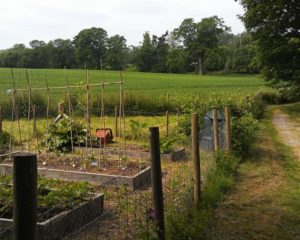Food Safety in the Home Garden
go.ncsu.edu/readext?685561
en Español / em Português
El inglés es el idioma de control de esta página. En la medida en que haya algún conflicto entre la traducción al inglés y la traducción, el inglés prevalece.
Al hacer clic en el enlace de traducción se activa un servicio de traducción gratuito para convertir la página al español. Al igual que con cualquier traducción por Internet, la conversión no es sensible al contexto y puede que no traduzca el texto en su significado original. NC State Extension no garantiza la exactitud del texto traducido. Por favor, tenga en cuenta que algunas aplicaciones y/o servicios pueden no funcionar como se espera cuando se traducen.
Português
Inglês é o idioma de controle desta página. Na medida que haja algum conflito entre o texto original em Inglês e a tradução, o Inglês prevalece.
Ao clicar no link de tradução, um serviço gratuito de tradução será ativado para converter a página para o Português. Como em qualquer tradução pela internet, a conversão não é sensivel ao contexto e pode não ocorrer a tradução para o significado orginal. O serviço de Extensão da Carolina do Norte (NC State Extension) não garante a exatidão do texto traduzido. Por favor, observe que algumas funções ou serviços podem não funcionar como esperado após a tradução.
English
English is the controlling language of this page. To the extent there is any conflict between the English text and the translation, English controls.
Clicking on the translation link activates a free translation service to convert the page to Spanish. As with any Internet translation, the conversion is not context-sensitive and may not translate the text to its original meaning. NC State Extension does not guarantee the accuracy of the translated text. Please note that some applications and/or services may not function as expected when translated.
Collapse ▲(Don Boekelheide CC BY – 4.0)
Make sure you’re getting the best benefits of a home garden by keeping the following food safety tips in mind:
- Site the garden in a safe spot. Consider prior site use and avoid areas that may flood easily.
- Always follow fertilizer and pesticide labels. This applies to both conventional and organic products. Wear appropriate personal protective equipment, and store materials carefully.
- Wash hands with soap and water before and after working in the garden. This is the best way to reduce the number of potentially harmful microorganisms. You can also use disposable single-use gloves.
- For irrigation, use a regulated, treated water source, or have the water tested to ensure it meets drinking water standards.
- Manage compost with food safety in mind. Locate compost bins downhill and as far from the garden as possible.
- Avoid using manure or fertilizers made with sewage sludge or bio-solids.
- Keep animals out with fencing. Animals can also be discouraged by keeping the garden clean and free of weeds and trash, and harvesting regularly.
- Sanitize tools and harvesting equipment.
For more information on food safety in the garden, contact Area Horticulture Agent Katy Shook at (252) 482-6585.





